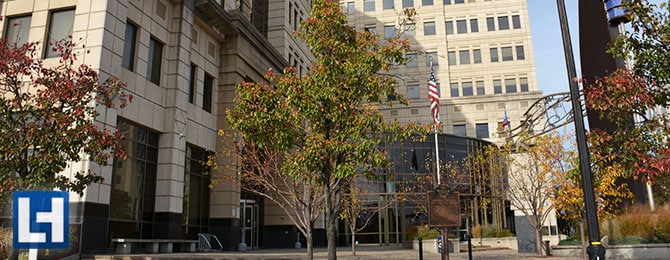
When you face criminal charges in Cincinnati, Ohio, you must go through the arraignment process. Before you head to arraignment, you may feel scared, confused, and unsure of what to expect next from your case – especially if this is your first time being arrested.
With help from an experienced Cincinnati criminal lawyer at Luftman, Heck & Associates, you can better prepare for what’s to come. Your attorney can help you understand what your arraignment will bring and what to expect from the arraignment process.
What Is Arraignment in Ohio?
Arraignment occurs when a defendant is formally charged with a criminal offense. This will be your opportunity to enter your plea of guilty, not guilty, or no contest.
From there, the judge will determine whether to grant bail and, if so, how much. You could also be released on your own recognizance (ROR), depending on the circumstances of your case.
When Does Arraignment Happen?
When you have been arrested in Hamilton County, your arraignment will occur at the Hamilton County Criminal Division of Common Pleas. Under the law, arraignment must happen within 72 hours of the arrest. However, if you were bailed out of jail, your arraignment could occur several weeks after your arrest.
If your arraignment does not occur promptly, your attorney might argue that your Sixth Amendment right to a speedy trial was violated. If this happens, the charges against you could get reduced or dismissed entirely.
Do You Have to Attend Arraignment in Ohio?
In most criminal cases, you must appear at your arraignment. However, if you have been charged with a minor offense such as a traffic violation, you may be able to simply pay your fine and waive your right to an arraignment.
Failure to attend your arraignment as the law requires could come with harsh criminal penalties. In the worst-case scenario, the judge may issue a warrant for your arrest.
If you were required to attend arraignment for a traffic violation, you could also face the suspension or revocation of your driver’s license.
Arraignment Process in Cincinnati
Here is a general idea of what you can expect from the arraignment process in Cincinnati:
First, the court will inform you of the charges against you. The judge may be required to read your indictment and ensure you understand the charges against you.
Next, you will enter your plea. You may have the opportunity to plead “guilty,” “not guilty,” or “no contest.” If you plead “not guilty,” the prosecutor will prepare to bring your case to trial. If you plead “guilty,” you may be immediately sentenced at your arraignment.
However, it is also possible that a guilty plea could be a part of a plea agreement with the prosecutor. If you plead “no contest,” you are not admitting guilt but arguing that the prosecutor has sufficient evidence to obtain a conviction.
Setting Bail or Pretrial Release in Ohio
Once you enter your plea, the judge determines whether to grant bail or pre-trial release. Some factors the court considers include whether you have a criminal record, your threat to the community, your ties to the community, and whether you have a history of failing to appear in court.
If the court grants a pre-trial release, there may be conditions to your release, such as
- Released on your own recognizance – you are released solely on your promise to appear for trial.
- Released on bail – you will be released from jail pending the court receiving a surety bond or cash bond for your release. Here, a bail bonds person may be permitted to deposit a percentage of your bond with the court and pay the court the remaining balance if you fail to appear.
- Supervised pretrial release – you are released but may be required to report to a probation officer or other supervisor and comply with other terms of your release such as a curfew, maintaining a job, abstaining from drug or alcohol use, and other conditions.
As part of your release, the court has the authority to require you to follow certain conditions. Like supervised pretrial release, there may be specific terms you need to meet, such as:
- Not being arrested on new charges
- Passing random drug or alcohol tests
- Having no contact with any witnesses in your case
- Being prohibited from carrying weapons
- Being banned from leaving the state or country
If you are accused of violating the conditions of your release, your bond or ROR can be rescinded, and you could be taken into custody while you await trial.
What Comes Next After Arraignment in Ohio?
If you have pleaded not guilty, the first step is discovery. Here, your attorney will exchange evidence and information with the prosecutor. This is where you can access the prosecution’s case against you. This can help you better prepare for trial. Once discovery is complete, we can file necessary pretrial motions. This is your opportunity to get evidence dismissed, request that the charges against you be dismissed, or work out a plea agreement with the prosecuting attorney.
From there, if we cannot resolve your case without going to trial, you will be given a court date and time where your attorney will defend you against the charges you are facing.
Get Help from a Cincinnati Criminal Defense Attorney Today
Your arraignment is only the beginning. Make sure you have a trusted Cincinnati criminal defense lawyer at Luftman, Heck & Associates, advocating for your freedom.
Schedule your no-cost, risk-free consultation to get started on your defense. You can reach our office by phone at (513) 338-1890 or our secure contact form to schedule your confidential case review today.

